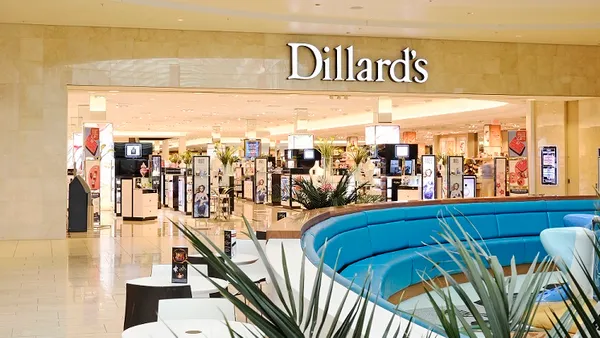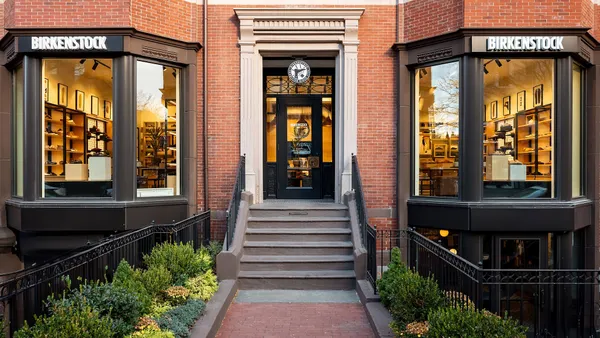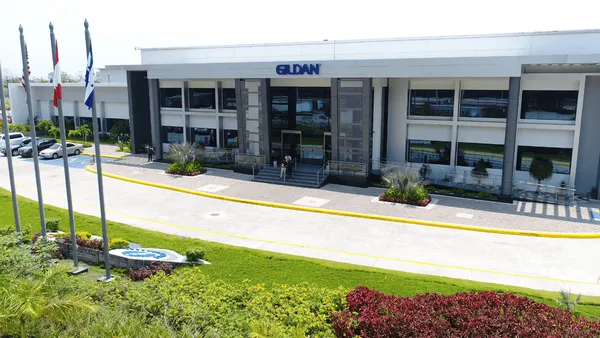Dive Brief:
- Gymboree said Friday that it had successfully exited bankruptcy after filing for Chapter 11 protection in June. The emerging children's apparel retailer was renamed Gymboree Group Inc, according to a press release.
- As part of the plan, Gymboree is closing and liquidating 330 underperforming stores and will shed some $900 million in debt, converting most of it into equity in the company. The re-capitalized Gymboree exits bankruptcy with a $200 million post-bankruptcy credit facility, a $85 million term loan replacement facility, according to the release. Among the company's lenders-turned-owners are Searchlight, Apollo Global Management, Oppenheimerfunds, Brigade Capital Management, Marblegate, Nomura Securities International and Tricadia Capital Management.
- The retailer also closed about 330 stores in bankruptcy, according to court documents. "With the support of our new equity owners, this process has allowed us to secure the Company's long-term financial health, and we are excited about the opportunities ahead as we turn our full focus toward executing our strategic product, brand and omnichannel initiatives," Daniel Griesemer, president and CEO of Gymboree, who started in May, said in a statement.
Dive Insight:
Gymboree has gone through a relatively orderly bankruptcy. It entered with a detailed plan, won the approval of the majority of its creditors before ever filing for Chapter 11 and exits with a final plan largely similar to the original.
Gymboree's path follows closely that of another specialty retailer to file for bankruptcy this year — Payless. Gymboree, like Payless, shrunk its store footprint fairly modestly, shedding fewer than 350 stores out of nearly 1,300 total, with most of those closures focused on the lower-priced Crazy 8 and namesake Gymboree stores. (The high-end Janie and Jack has been profitable for Gymboree.) And now Gymboree, like Payless, will have to maintain its remaining market share in a tough climate for specialty retailers.
Founded in San Francisco in 1976, Gymboree was at first a play and learning outlet for kids (a side of the business since sold off). It opened its first store in 1986. In bankruptcy filings, Gymboree said it had "fallen victim to adverse macro-trends" such as the growth of online sales and traffic declines at malls.
The retailer had problems of its own making as well. David Silverman, senior director for retail coverage at Fitch Ratings, told Retail Dive in an earlier interview that Gymboree’s various store lines have essentially been cannibalizing each other while competitors such as Carters and The Children’s Place have been outpacing the company in growth.
Add to those retail issues a financial vise created by roughly $1 billion dollars in debt, a legacy from private equity firm Bain Capital’s leveraged buyout of Gymboree in 2010. "Internally generated cash flow has to be redirected to interest expense and other fixed obligations, which leaves the company unable to devote capital toward addressing its challenges through updated merchandising, through investing in omnichannel systems, through investing in store remodels appropriately to drive consumer excitement," Silverman said in the weeks before Gymboree filed in June.
The company's restructuring plan is meant to fix these problems by reducing debt and injecting some new capital. The store closures are also a way to shore up the company’s balance sheet for the long-term, scaling down the retailer as it tries to focus on its most profitable lines.
Time will tell if Gymboree can maintain market share and profitability amid heady competition. For its part, Gymboree said in court documents that it was trying "[t]o protect the inherent value in its businesses and to address the existing macro-economic challenges" by rationalizing its store footprint, cutting operating costs and developing its wholesale business and online presence.












